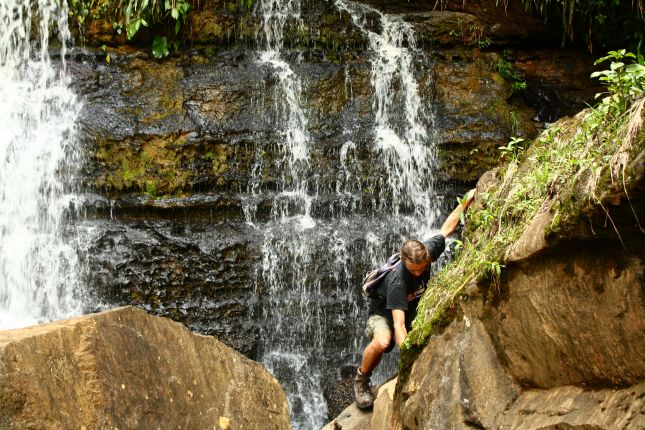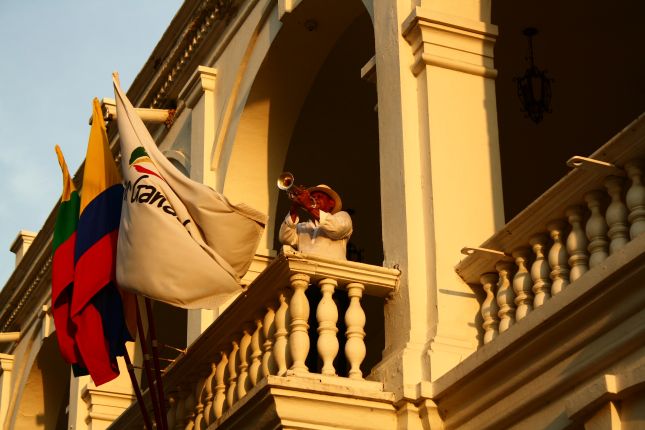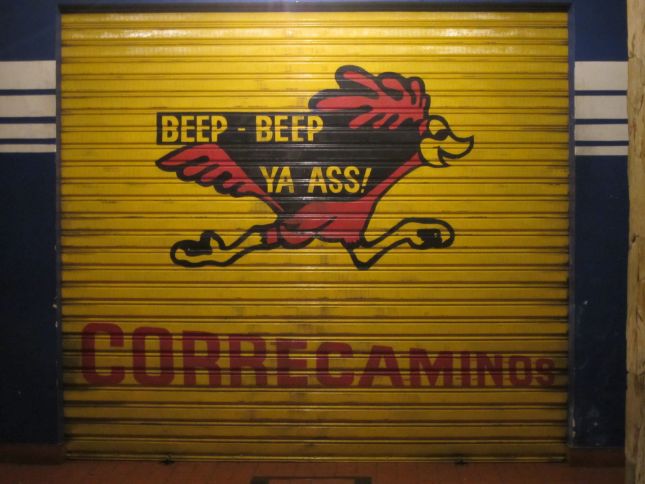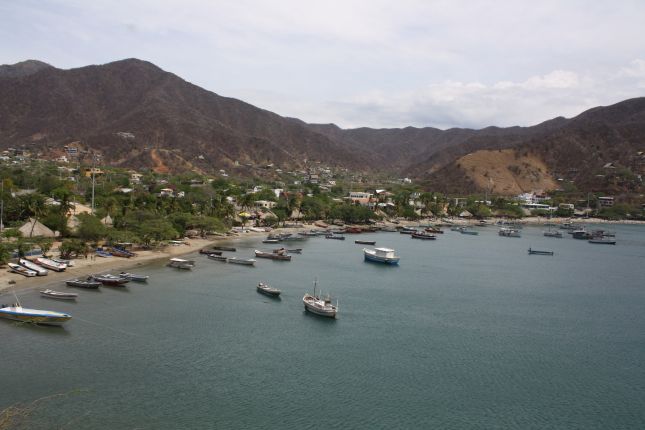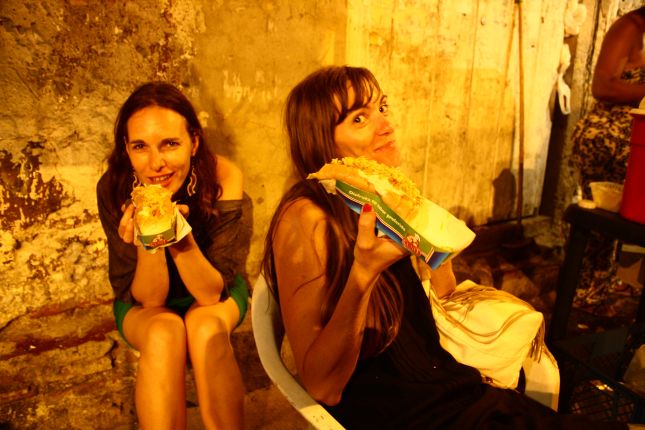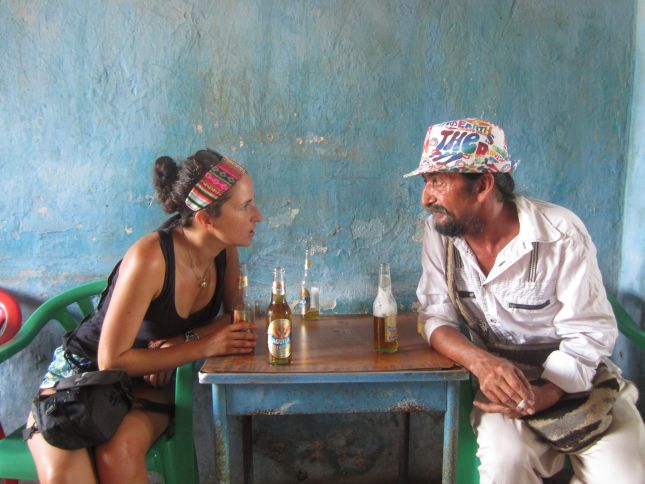
Chilling to the Horizontal – Mompox, Colombia
TRIP INFO BOX |
|
| Route | Cartagena, Colombia – Mompox, Colombia (90,25,78) |
| Distance | 240Km |
| Travel Time | 7 hours, 1 hour ferry |
| Road Conditions | Good tarmac, 60km rough to Magangue, 20Km gravel to Mompox |
| Weather | Hot |
| Terrain | Hilly, dry to green |
| Food and Petrol | El Carmen |
| Accommodation | Casa Amarilla, Mompox |
We leave Cartagena late, about 11:00 but we don’t have that much mileage to cover. On our way out we bump into a Canadian-Swiss couple on their way down to Tierra Del Fuego on a BMW GS1150 but we don’t have much time to talk. The journey to Santa Cruz de Mompox (spoken: Mompos) takes about 7 hours including the 45-minute ferry ride and the wait.
The nice tar bends all the way from the outskirts of Cartagena to the ferry at Magangue (straight all the way until a fork left at El Bongo) – a journey through dry hills and some flatlands. Plenty of petrol stations on the way and village stalls selling all sorts of local produce from honey to empanadas to fresh orange juice. Amiable soldiers give thumbs-up at the various military checkpoints. Even at 100Km/h there is not much respite from the crushing heat.
The ferry dock is just about 5 minutes out of town, a taxi driver points us in the right direction. A couple of guys offered their boat services from an earlier ‘jetty’ but getting my bike into their little vessels seemed a bit too adventurous for us. It’s no more than a sandy slope down into the river next to a little tienda/restaurant. They make an excellent fresh orange juice there. They told me the following ferry times there (some are large and others small, but apparently able to take cars):
– Magangue-La Bodega: 05:00, 08:00, 10:00, 13:00, 15:00, 16:00 – La Bodega-Magangue: 06:00, 08:00, 09:00, 13:00, 16:00
After the crossing the road varies between asphalt and gravel and there is about 20Km which is solely gravel and sand, sometimes dangerously loose and deep. It’s a half hour of fist-clenching riding but very doable and worth the destination. On the road side there are villages small, happy looking villages and people are going about their business and looking content.
We check into the Casa Amarrilla (http://www.lacasaamarillamompos.com) next to the Iglesia Santa Barbara (15000CLP/dorm bed). We have a little disagreement because when we get there we’re told we can park the bike somewhere inside the hostel but then later are denied. We’re not happy to park in the car park down the road which they recommend, but they resolve the situation satisfactorily by arranging with the lady next door for us to park our bike in her garage. Casa Amarrila is a beautiful hostel, a large colonial edifice with a small garden courtyard in its centre, dorm and private rooms, excellent kitchen / dining area and a roof terrace which makes the perfect nighttime escape into the breeze above the rooftops. There aren’t lockers in the rooms but small padlock lockers are provided for valuables at the reception desk.
At about the same time a few nice folks of our age-group stay there, respectively from Austria, Germany, Australia and Belgium. We enjoy the like-minded company and speaking in our native languages for a change and our stay extends to three nights.
Mompox is so laid back it’s asleep. It is a small town with one main avenue and many side roads. The architecture is beautiful antique Spanish colonial – big, wide walls, large doorways and doors of ancient wood with brass studs and big, antique padlocks. Simply magnificent. People are super-friendly and seem to be of the more sensible village-type, as yet uncorrupted by trends and fashions of the main stream and money. Everyone here is up for a conversation and curious to know where you come from and what you think. We think we’ve finally encountered the Colombia we were hoping to find. Things are looking up!
There’s a really interesting phenomenon going on at the park just opposite the hostel: on the dry ground, underneath the massive trees, there are two little bars which open in the afternoon and carry on until about 3 in the night. Each is run by a different owner, and each is about the size of a shoe box – literally only big enough for the guy and his beer fridges inside, and there’s a flap-window which opens on one side. Around there is a scattered collection of plastic garden furniture for the guests.
Each bar comes with a music system and a set of large speakers. Each owner seems to have their own taste in music. So, what happens here at night is, they both start playing their preferred tunes and turn up the volume so loud as to drown out the sound of the other. This has the interesting effect of making either music barely recognizable in the cacophony, and guests sitting on the garden furniture have to shout to each other to talk.
Who would have thought….
This town is in fact a very important historical city. Perched on the largest river-island (possibly in the world, I may have read?), smack-bang in the middle of the mighty Rio Madeira, which runs from far in-land right out to the port of Barranquilla, it was once an extremely rich Spanish colonial port, through where riches would flow to and from the country’s inner. (And boy, were there riches! There are old tales from the Spanish colonists of gold nuggets strewn across river banks. Not to mention the Emeralds.) Also the country’s mint was here.
But that all ended for Mompox when the river silted up (I can only imagine why) and the route was no longer viable.
In the day it’s searing hot. Taking a midday walk something of a health risk, though this can be worked around by sticking to shady spots and making occasional beer stops at the tiendas along the way. At night a light breeze descends, people park their wooden rocking-chairs outside their front doors or sit on the old park benches and enjoy the nighttime respite and each others’ company.
At night there’s good food around the Plaza Santo Domingo for around 7000 Pesos and some of the best fruit smoothies we’ve ever encountered in S.America – notably the mix of Goyaba (Guava) and Tomate de Arbol (Tomato of the Tree). We’re very pleased to have come to this place. We were hoping to escape the usual city hecticness by coming to a place less easily accessible, and this time we’ve found just that.
